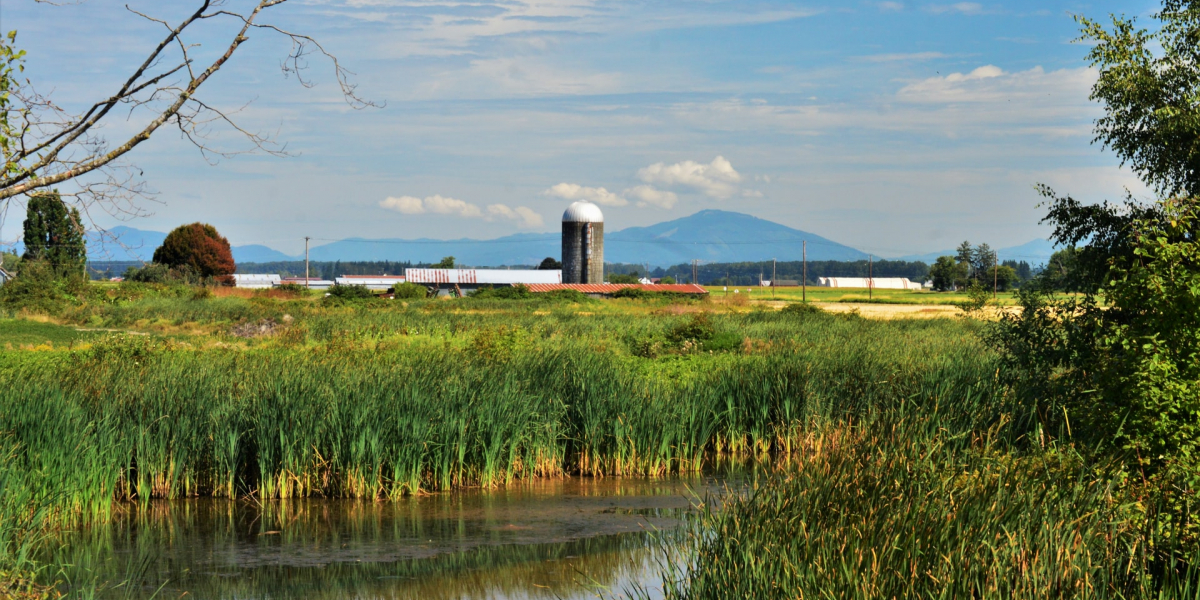
April 22, 2021
By Paige Olmsted and Sushant
A year ago, on the 50th anniversary of Earth Day, we considered how to move forward on pressing climate and biodiversity challenges amid a global health emergency. Few expected that on this 51st Earth Day, we would still be experiencing a health crisis, economic uncertainty, and lockdowns at a national scale. But the uncertainty of the COVID-19 pandemic has only made our dependency on a healthy environment clearer.
More than ever, there is a widespread recognition that a healthy natural world is essential in supporting vibrant communities and economies. We rely on nature to deliver critical ecosystem services, provide resilience to climatic and economic shocks, and protect against future pandemics. Accessing greenspaces has also provided multiple benefits to our physical and mental health in these challenging times.
Many actors - from federal and provincial governments to municipalities to NGOs to corporate actors - are recognizing the need to do more, as well as the significant benefits that can be generated by investing in nature. This week’s Federal Budget included many significant announcements for the environment, including for conservation and restoration of natural areas. Several of these investments were made in areas where SPI is conducting research and engaged in partnerships to advance smart investments in nature.
1) Scaling Protected and Conserved Areas, especially Indigenous Protected and Conserved Areas. Achieving global biodiversity targets, and Canada’s commitment to conserve 25% of land and water by 2025, will require deep engagement with and leadership by Indigenous communities, in addition to significant financial support. The $2.3 billion allocated in the Federal Budget for a further one million square kilometers of provincial and territorial protected areas is a meaningful commitment that can be further leveraged by working with partners who recognize the upstream and downstream benefits of conservation. Job creation through Indigenous Guardians programs and natural resource management was highlighted by the Task Force on Resilient Recovery as a cost-effective means to provide jobs in remote areas, support climate adaptation, flood and fire regulation, and species at risk.
2) Promoting Natural Infrastructure. Wetland restoration, urban trees, and rain gardens can support urban biodiversity while also helping to deliver key municipal services, such as stormwater management. The federal budget proposed $200 million over the next three years to create a Natural Infrastructure Fund to support natural and hybrid infrastructure projects. In partnership with the Canadian Institute for Climate Choices, SPI will soon publish a set of case studies highlighting the potential for natural infrastructure to deliver important services in Canadian municipalities in a cost-effective manner, highlighting several examples where local and regional policies have helped scale action.
3) Supporting Nature and Climate Smart Agriculture. Budget 2021 committed $200 million over the next two years for the Agricultural Climate Solutions program, which promotes on-farm measures to reduce and sequester greenhouse gases such as cover cropping, normalizing rotational grazing, and efficient nitrogen fertilizer management. An additional $60 million from the Nature Smart Climate Solutions Fund will be allocated to protect wetlands and trees on farms, including through a reverse auction pilot program. Many of these commitments reflect the recommendations from Farmers for Climate Solutions’ pre-budget submission, which SPI contributed to as part of its Expert Task Force. In the coming months, SPI will have many more insights to share on policies for growing the agricultural sector while reducing its environmental footprint and enhancing on-farm ecological services.
4) Engaging the Financial Sector. The Budget also announced a green bond framework, the details of which will be published in the next few months. This framework will lay the foundation for Canada’s first federally-issued green bond, which seeks to raise $5 billion in private investment. Nature conservation was listed as a project type that could be supported by these bonds, and provides a further venue for new partners to engage in conservation and restoration. SPI will be participating in a Conservation Finance Event hosted by Nature Conservancy Canada on May 11 where catalyzing action in this space will be discussed.
The time has come to roll out a green carpet to help build prosperous communities and a resilient economy. Protecting and restoring nature can influence many dimensions of our lives. However, it is challenging due to the complexity of natural and social systems. For example, effective strategies often require collaboration across multiple departments in a city, public-private partnerships, and connecting local investments in greenspace to health outcomes, which is an area under provincial jurisdiction. On the other hand, it is because of this complexity that investments in nature deliver such diverse benefits to so many different groups.
This complexity also means that many organizations and individuals need to be involved in efforts to address environmental challenges, with biodiversity loss and climate change at the forefront. There is a role for everyone to play. The Leader’s Summit on Climate hosted by president Biden this Earth Day focused on ramping up commitments to reduce emissions by the US, Canada, and other nations. Promises of large emission reductions and financial investments lead to headlines, but it will be up to these involved groups to ensure that these commitments lead to meaningful action, every day of the year.